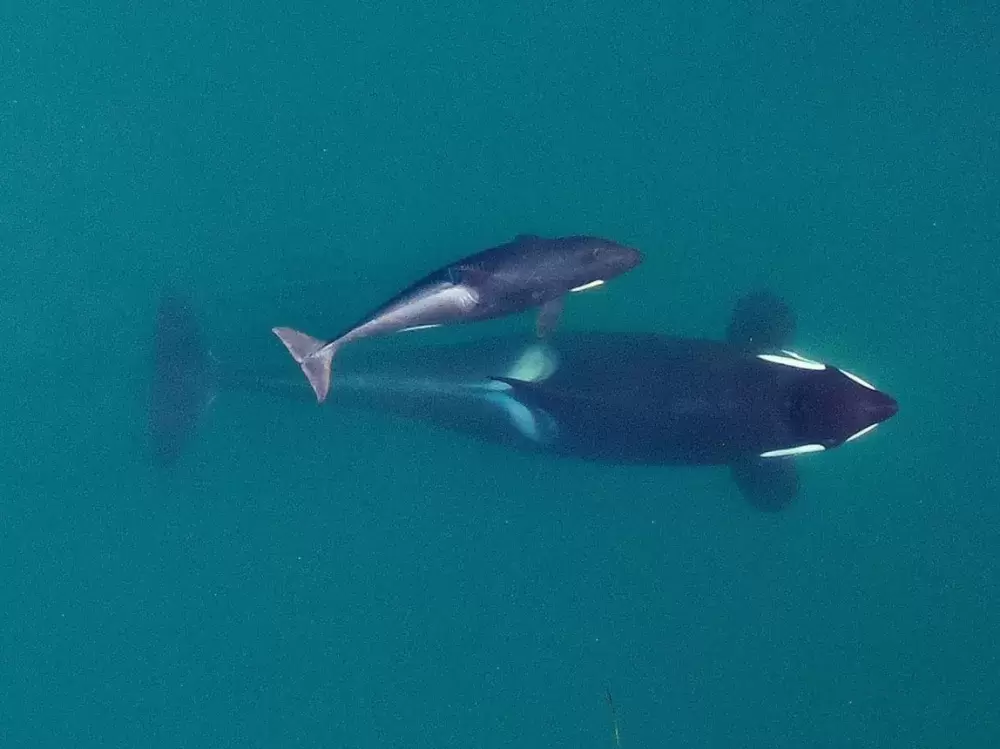Anglers and fishing guides from around Vancouver Island got the chance to voice their concerns to federal Fisheries and Oceans managers, who are suggesting a closure to a large fishing area at the entrance to Barkley Sound in order to preserve prey for the endangered Southern Resident Killer Whale.
Members with Fisheries and Oceans Canada (DFO) were at the Barclay Hotel on Oct. 3 for a public engagement session on recovery strategies for Northern and Southern Resident Killer Whales.
The DFO claim the area from Long Beach down to Sooke, including Swiftsure and La Parouse Banks, are critical habitat for the Southern Resident Killer Whales.
Christie McMillan, species at risk researcher for the DFO, told the packed room about the threats to Southern Resident Killer Whales.
“Northern and Southern Killer Whales were assessed by the Committee on the Status of Endangered Wildlife in Canada (COSEWIC), an independent advisory panel in 2001,” she said. “Northern Resident Killer Whales were designated by COSEWIC as threatened and Southern Resident Killer Whales as endangered. These whales were considered to be at risk due to their small population sizes, their low reproductive rate and because of the variety of human-caused threats that have potentially caused further decline to their population.”
The status of both Northern and Southern killer whales was reassessed and confirmed by COSEWIC in 2008.
According to the DFO, the greatest threats to Resident Killer Whales are reduction in prey availability, contaminants, and acoustic and physical disturbance. Exposure to toxic spills, interactions with fisheries and aquaculture, and climate change are other human-related threats that may negatively impact the Southern Resident Killer Whale population. Natural factors - such as diseases, narrow prey selection, complex social structure, late sexual maturity and low birth rate, inbreeding, and mass stranding or natural entrapment - may also impact the survival of these whales.
The DFO’s Recovery Strategy for the Northern and Southern Resident Killer Whale in Canada was finalized in 2008 and outlines threats, recovery objectives and partial critical habitat for the whales. Minor amendments were made to the document in 2011 to clarify attributes of the critical habitat.
Critical habitat is defined in the Species at Risk Act (SARA) as the habitat that is necessary for the survival or recovery of a listed wildlife species. The known range of the Southern Resident Killer Whale extends from southeastern Alaska to central California. According to the DFO, during the summer months, these whales concentrate off the southern end of Vancouver Island and northern Washington State, and are frequently sighted in Haro Strait, Georgia Strait and the Strait of Juan de Fuca.
Many of the fishermen who spoke at the meeting said they have never seen Killer Whales at La Parouse Bank in their more than 30 years fishing there and if DFO are worried about a lack of Chinook Salmon for the whales, they should invest in salmon enhancement and habitat restoration.
The many passionate anglers who had the opportunity to engage with DFO members also attributed pollution from the Fraser River as a component to the decline in Southern Resident Killer Whales.
Island angler Gary Cooper said the killer whales are sick and not deprived of fish.
“There’s nothing wrong with our fisheries, I’ll tell you that right now. I’ve been fishing here for 32 years all up and down the coast and the fishing is still fairly strong,” Cooper said. “What our problem is, is we have sick killer whales in the southern coast and these killer whales are sick from the pollution, whether it’s from Puget Sound or from tankers or from the Victoria waste. It’s a world problem and it’s killing calves.”
Long-time commercial fisherman Andy Webster urged DFO to spend funds on salmon restoration instead of closing fishing areas.
“I’ve been commercial fishing pretty much my whole life. You guys are putting a band-aid on a problem. Start restoring our habitat…spend some money,” he said.
Colby Benty, a young fisherman from Port Renfrew, asked DFO to reconsider a fishing closure that would seriously harm his livelihood.
“I’ve grown up in this industry, made my livelihood off it and I’d like to raise a family off this industry,” Benty said. “I’m terrified of the social, cultural and economical ramifications this closure will have on my community of Port Renfrew and all other communities on the Island. I know a lot of us in here rely on this industry and for it to close we wouldn’t know what to do with ourselves.”
Hugh Braker, Tseshaht councillor, said he has yet to find conclusive evidence that the designation of the protected area is going to have any effect on saving resident killer whales.
“Tseshaht, like the other groups, is anxious to hear from DFO and from other people in the federal government about this proposal, about this proposed action,” Braker said. “We have yet to be convinced that it’s the right one or that it’s going to be effective.”
Several other anglers echoed the sentiment that DFO needs to put more money into salmon enhancement and that they are “ignoring” other threats to the killer whales, including pollution.
“I really encourage DFO to engage with our community, we all live in these rural communities. We need more management, we need to manage space as multi-use space for ourselves and whales. We don’t need to close off huge areas, that’s not going to help,” said Keith Wyton, Alberni-Clayoquot Regional District director for Bamfield.
As well as having the opportunity to stand before DFO and speak, fishers were able to conduct audio interviews about their concerns that were submitted to the DFO.
A 60-day public comment period, until Nov. 3, is also available online. A report and the recommendations will be brought to the fisheries minister sometime next month.







